Seven tips to help you tidy up once and for all

Photo: Thinkstock
“Have you ever tidied madly, only to find that all too soon your home or workspace is cluttered again?”
That’s the question that Japanese organizational consultant Marie Kondo asks at the beginning of her best-selling book The Life-Changing Magic of Tidying Up.
It’s a common problem that many books and magazines have tried to solve in the past, but no one ever seems to have a perfect answer. Kondo says that’s because we’ve been approaching tidying the wrong way.
“People are tidying their homes in the wrong order,” said Kondo, via a translator. “I recommend you to tidy by a given order, which is to start with clothing, then books, documents, small items and in the end sentimental items from your loved ones.”
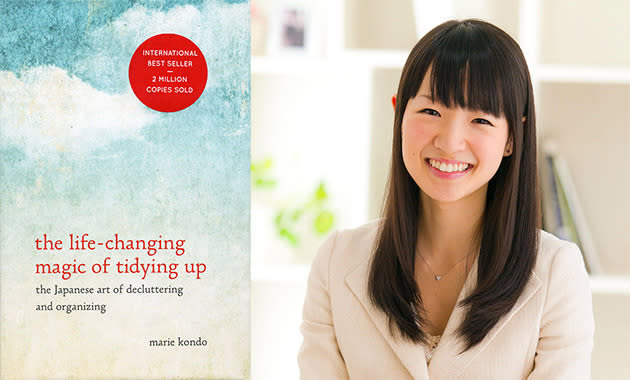
Marie Kondo, author of The Life-Changing Magic of Tidying Up. Image courtsey of Sunmark Publishing Inc.
Kondo’s tidying up technique, nicknamed The KonMari Method, has become popular all over the world. Since her book launched in 2010, it has been republished in various editions and has sold over 4.8 million copies in more than five languages.
The premise of her technique is simple: in order to create a positive home environment you should only keep the things that make you happy.
“I ask people to hold their possessions one by one in their hand, then ask themselves a question: does it spark joy?” said Kondo. “When you feel it spark joy in your heart, please keep that item. If not, it’s time to say goodbye.”
Of course, many practical items, such as snow shovels or toasters, should be kept even though they may not spark joy. For these items, Kondo recommends that we learn to appreciate them for helping us through our day. Eventually, she says, you will start to see how they can add joy to your life as well.
In The Life-Changing Magic of Tidying Up Kondo claims that all of her private consulting clients have been able to keep their homes tidy after completing her course. To get similar results in your own home, try following these tips from the book.
Start by discarding
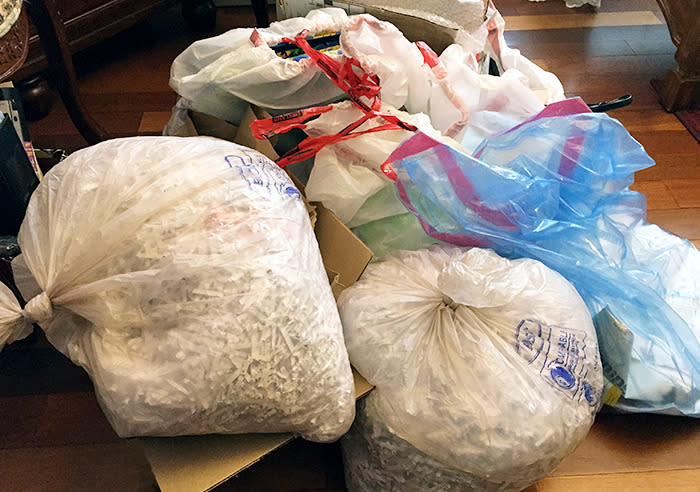
Bags of items to donate and shredded paper. Photo: Shareba Abdul
Kondo says that the first step to permanently tidying your home is to get rid of everything that doesn’t spark joy or have a purpose. In fact, she doesn’t want you to even think about putting things away until you have gone through he process of discarding what you don’t need or want.
It’s important to note that this doesn’t mean that you should throw everything in the garbage though. Gently used items can be given to friend, donated to charity or sold.
Tidy by category, not location
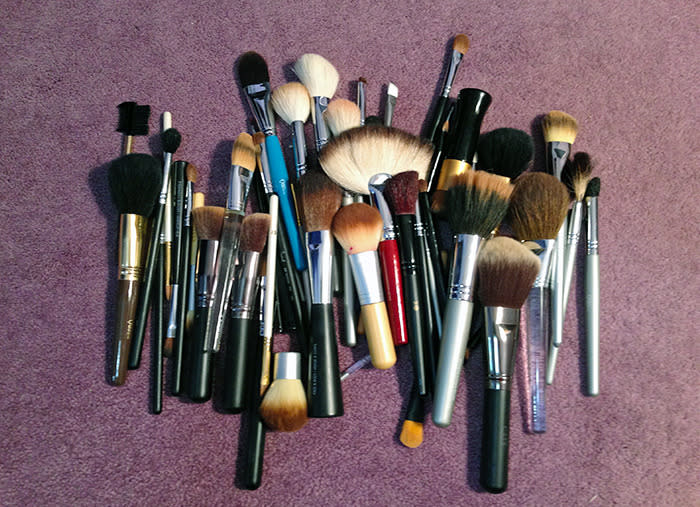
Makeup brushes collected from multiple rooms in the house. Photo: Shareba Abdul
“Please do not tidy room by room, or place by place,” says Kondo. While most people clean one room at a time, Kondo insists that this is a mistake.
Instead, she recommends that you collect one category of items (like clothes) from every room in the house and go through them all at once. Doing so not only helps you discover duplicate items that you might have, but it also means that you won’t have to deal with those items again.
Leave the emotional stuff for later
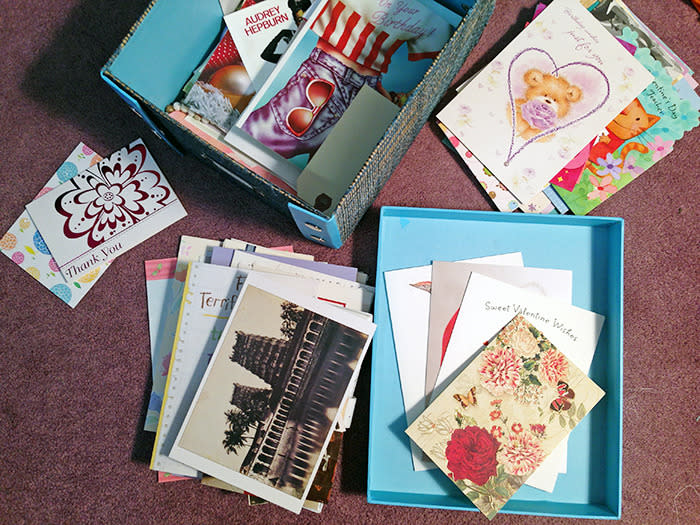
Old postcards and letters. Photo: Shareba Abdul
“Photographs and letters not only have a high sentimental value, but also are one of a kind,” said Kondo in her book.
She explains that the combination of emotional value and rarity makes these items extremely difficult to part with. In order to keep up a good momentum in your tidying process, be sure to sort through these kinds of items last.
Give a fixed position to your possessions
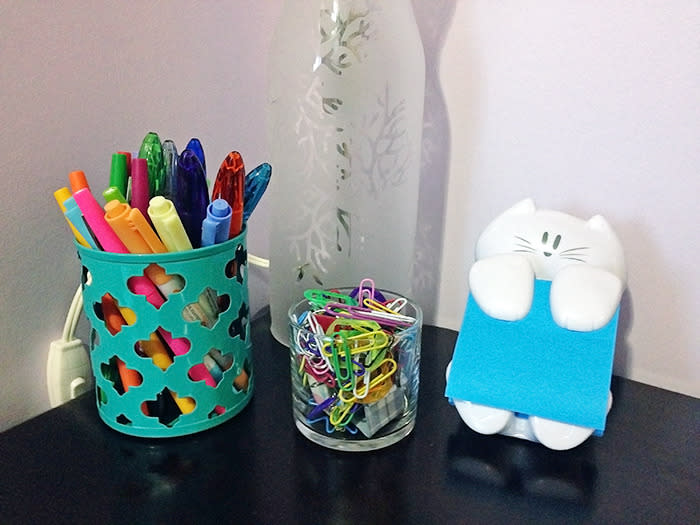
Organized office supplies on a desk. Photo: Shareba Abdul
Once you have decided on what you’re going to keep, its time to figure out where to put them.
“Please give a fixed position to your possessions, and after finish using an item, please return it to its original position,” says Kondo.
When everything has a designated spot, you’re less likely to find your home becoming cluttered again.
Utilize your space efficiently
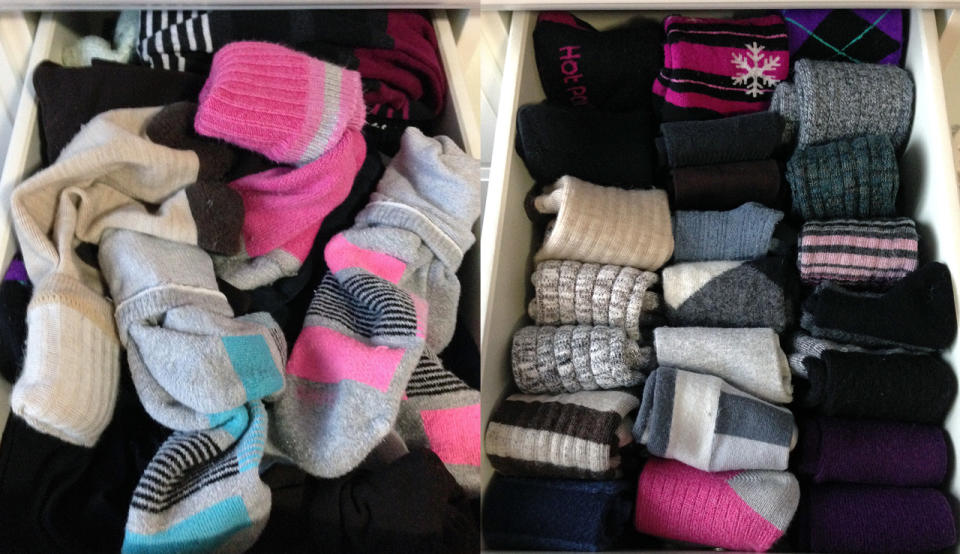
A sock drawer before and after using Kondo’s folding method. Photo: Shareba Abdul
If you find that you still don’t have enough space to store everything you’re keeping, chances are you’re not using your space effectively.
For clothing, Kondo strongly recommends folding most items into “a simple smooth rectangle” and storing them standing up in the drawer to save space. Anything that cannot be folded should be hung in your closet.
Kondo also uses the standing up technique to store a variety of other items, such as office supplies, in drawers.
Avoid the storage trap
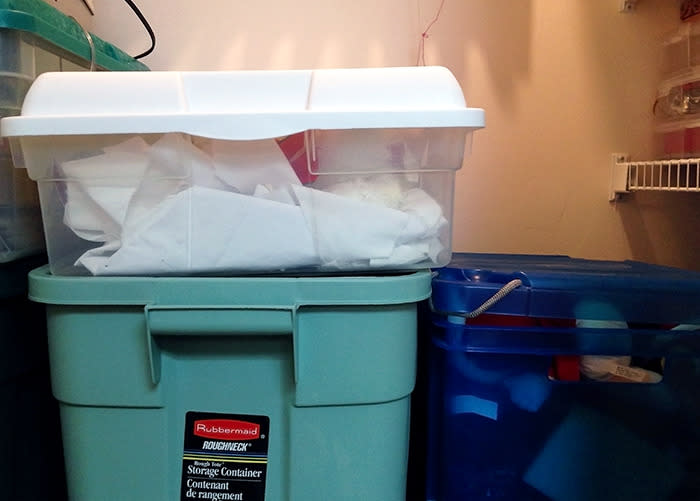
Storage bins aren’t always the best choice. Photo: Shareba Abdul
Perhaps one of the most controversial points in the book is Kondo’s criticism of storage experts. In her book she claims, “storage experts are hoarders” and warns “storage methods do not solve the problem of how to get rid of clutter.”
Before you hide your things away in a storage container, consider why you’re putting it away. Are these items things that you seldom use? Do you need to keep them? If the answer is yes, opt for a clear container so you don’t forget about what you put away.
Learn to appreciate your things
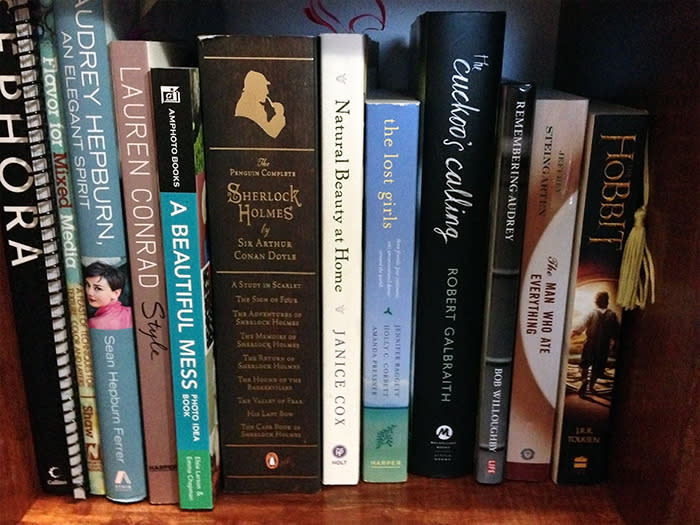
Storing your possessions with care helps to create a tidy home. Photo: Shareba Abdul
One of the tasks that Kondo gives to her clients is to appreciate their belongings. Although her method may seem a bit strange (i.e. she recommends verbally thanking your clothes for keeping you warm), the concept is easy to grasp. When we learn to appreciate the things we have, we take better care of them.
Consider treating your laundry, books and office supplies with the same respect that you give to your expensive electronic devices.
While these tips can be easy to follow, don’t get frustrated if you find that it’s taking you a long time to get tidied up. Kondo says that the length of time you’ll need to get completely tidy will depend on your individual situation.
“Some people can finish tidying within few days, but some might take few weeks, and some might take even months,” says Kondo. “Yet I want to point out that this is not a endless journey. If you wish to clean up, use my KonMari Method, and you’ll finish all your tidying.”


